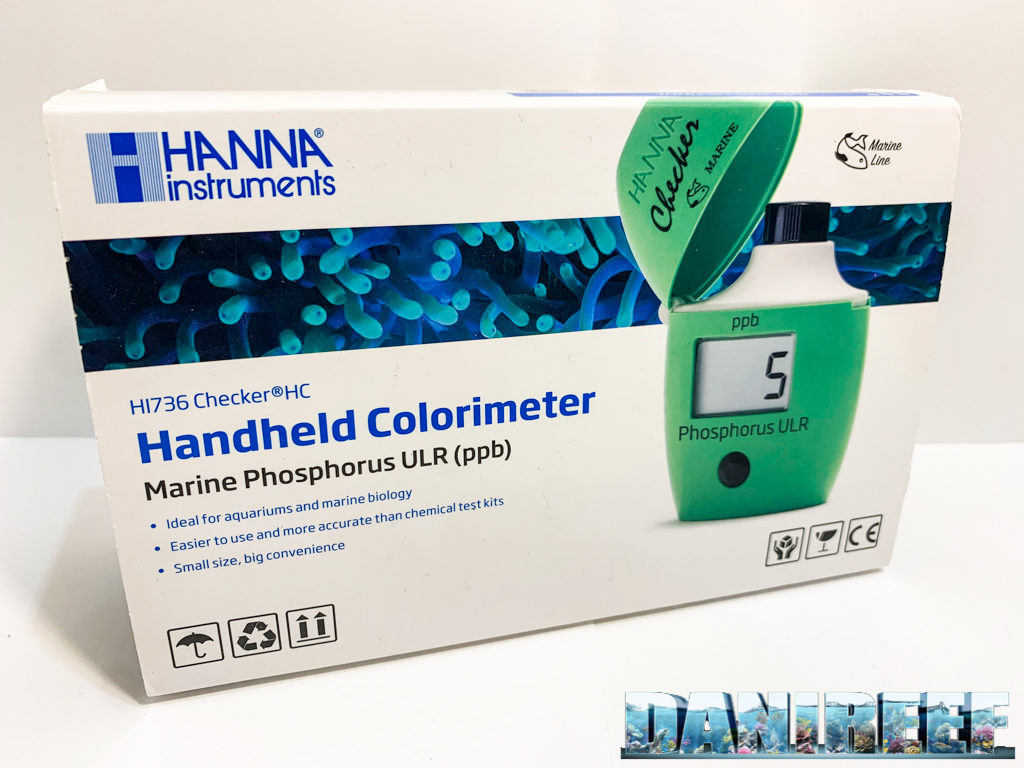
In today’s article let’s talk about measurements and tests. One of the fundamental parameters that we should always keep under control in our marine aquarium is, without a doubt, the quantity of phosphates in the water.
We’re trying out a very precise and reliable tool, the Hanna HI736 – Phosphorus ULR Checker (Ultra Low Range).
The Checker HI736 is part of the famous line of equipment for the marine sector that Hanna Instruments, an Italian company of international relevance, provided us some years ago. This instrument is from the Hanna Marine Line series.
We tried it out for you and after a long period of use we are now able to present to you our review.
Phosphate and phosphorus
Now, for the ones that wonder why is so important to keep the phosphates present in a reef aquarium under control, we remind you that the phosphate (PO4) in the water interacts with the calcium carbonate (CaCO3), the principal material of the hard corals’ skeletons. This interaction uses up essential material for the coral and limits the building of the calcareous skeleton, slowing down its growth or even stopping it completely.
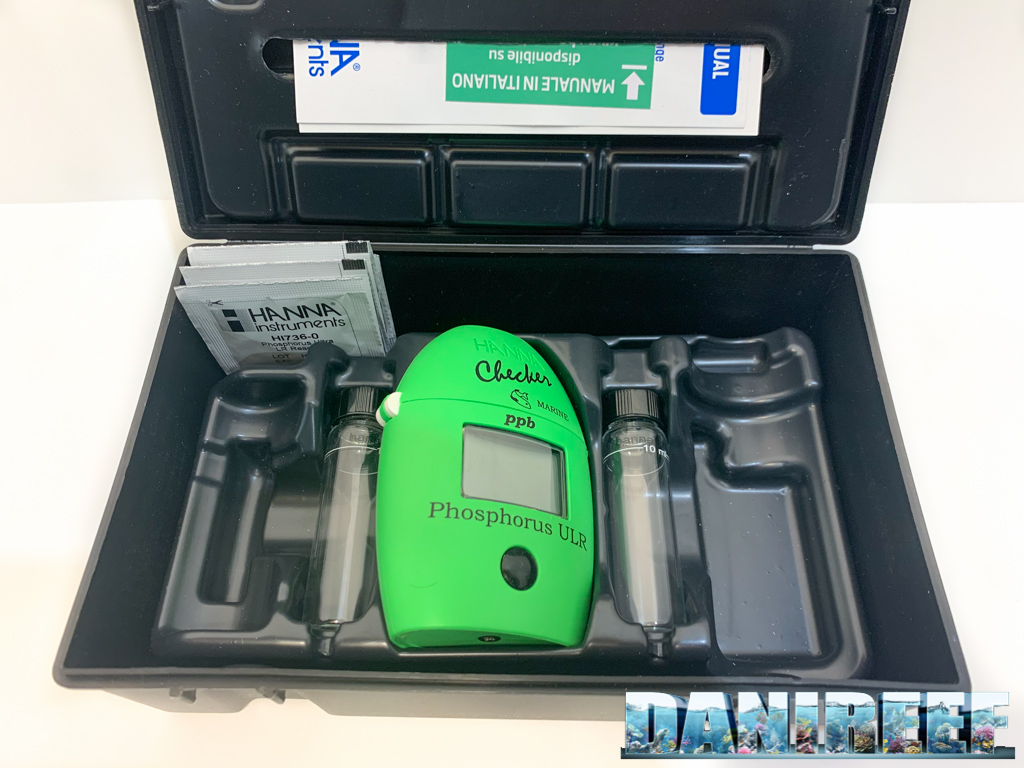
Moreover the presence of phosphorous can considerably affect the growth of unwanted algae. And we all know that, even if the algal phase is typical in the process of maturation, if it were to continue, it would be because of the presence of phosphate.
So, where were we?
We talked about phosphate measurement… so why would we need a device for phosphorous?
Because with it we would make an even more precise evaluation than with the Checker for phosphates.
Main characteristics of the Hanna Hi736 Checker
Functioning
The HI736 Checker works following the same principles of a photometer. A LED source at fixed wavelength (525 nm) is sent through the liquid to measure and a silicon photocell detects the light beam at the end of its run.
The resulting spectrum is analyzed and it will tell us the value of phosphorus in the sample.
Supply
The supply source is a AAA battery of 1.5V, which is included. It has to be placed in the slot on the underside of the instrument, under a cap opened by a safety screw.
Range of functioning
The device can measure from 0 to 200 ppb (parts per billion). The nominal operating temperature goes from 0 to 50°C (32 – 122°F).
Resolution
The resolution is 1 ppb.
Accuracy
The accuracy is +/- 5 ppb plus the +/- 5% of the measurement (for measurements done at 25°C).

The costs
The HI736 Phosphorus Cheker ULR is sold in Hanna’s online shop at 55€ + IVA, to which you have to add the shipping cost.
In the package there are 6 bags of reagent for the measurement, the other tests have to be purchased separately. A package of 25 tests, that you’ll find with the code HI736-25, is sold at 10€ + IVA.
So, a single test, if you don’t consider the starting purchase, would be about 0,49 € for each measurement, which is very affordable. Plus, given the fact that the reagents are bagged singularly, the expiration date is pretty far. Their integrity can be preserved through a couple of years, if correctly kept, which is a great advantage when compared to the normal tests that usually don’t last over six or seven months after they’ve been opened.
Unboxing
The external wrap in cardboard, with the clear and linear Hanna’s graphic, contains the classic rigid back plastic package.

Inside the case you find, perfectly ordered, the following:
- the control device, with its egg shape, green colored;
- a AAA battery of 1.5V;
- 2 calibrated cuvettes with a notch at 10ml and the closing cap;
- 6 phosphorus reagents in their bags;
- the instruction manual in English.
Our video review
Here is our video of the presentation of the HI736 Checker. You can add the subtitles in English and follow step by step.
The manual
The instruction manual is in English. There’s also a short brochure with the procedure in graphic form that leads you step by step through the measurement. Both the files can be found in JPG format inside the download section of the HI736.
The test isn’t very complicated. Nonetheless, we quite liked the choice of putting a graphic procedure; it shows caring for the costumers and attention to detail. The steps are showed clearly and it’s difficult to make mistakes.
Add to this the option to download the safety data sheets of the reagents used in the procedures. In fact, Hanna has made available all the information by law, guaranteeing clarity and transparency about the chemical products used and about the risks linked to their use.
The procedure
Once you open the package you’ll find the plastic egg. In order to insert the battery in the compartment you have to unscrew the screw that keeps it closed. Once you insert the battery, close the lid be careful to correctly insert the small connector. Now the Checker is ready to be used.
Phase 1: Calibration
- First thing, you have to turn on the instrument by pressing the black button. After a few seconds, “ADD C1” will appear on the display with the flashing instruction “Press“.
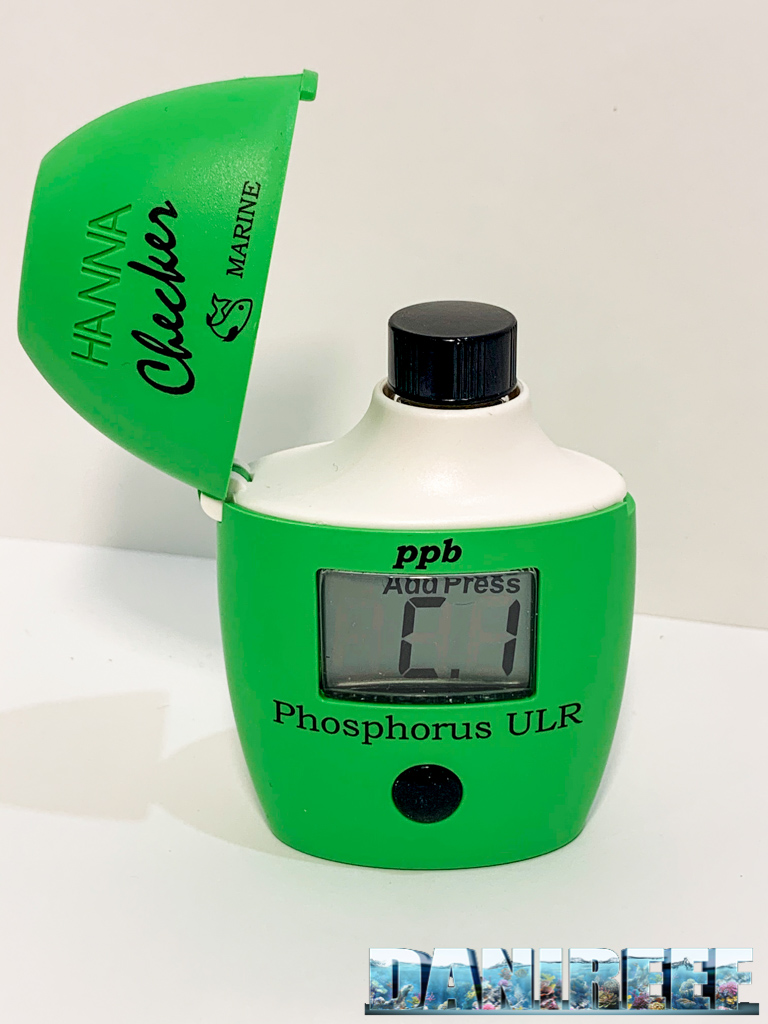
2. Fill one of the cuvettes with 10ml of the water you have to analyze and tighten the cap.
3. Thoroughly clean the glass with a microfiber cloth to eliminate any residual dirt that could distort the result.
4. Insert the cuvette in its compartment and close the lid.
5. Press the black button. After a few seconds “ADD C2“, will appear on the display, with the instruction “Press” flashing. This means that the Checker has completed the reset and is ready to do the real measurement.
Phase 2: Measurement
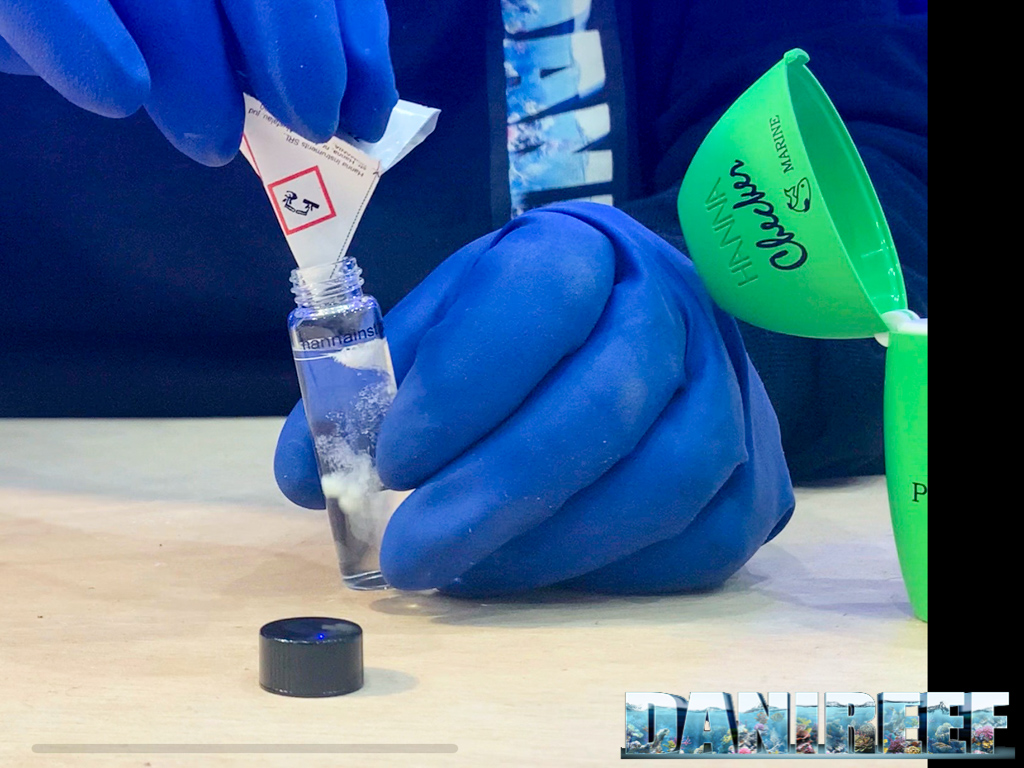
6. Cut with scissors the two sides of the bag of reagent and pour the content in the cuvette (that you have to take and open).
7. Tighten the black lid and shake for two minutes so that the reagent will completely dissolve in the water.
8. Wait for a couple of seconds and, if necessary, shake gently to eliminate any bubbles. Thoroughly clean the glass with the cloth.
9. Place the cuvette in its compartment and press the black button until the timer starts. It’s already preset on 3 minutes.
10. Wait for the end of the count and read the result on the display.
The value gives the the measurement of the phosphorus expressed in ppb (parts per billion).
The conversion formula
There’s a simple conversion formula which lets us know the value of the phosphate ion starting with the value of phosphorus found.
This is the calculation:
[VALUE OF PHOSPHORUS] (in PPB) * 3.066 (fixed coefficient)
Let’s take as example the test that we just did. As we saw the measurement reported by our egg was 3 ppb that is 3 parts per billion.
In order to find the phosphate ion we have to take this value and multiply by the fixed coefficient of 3.066.
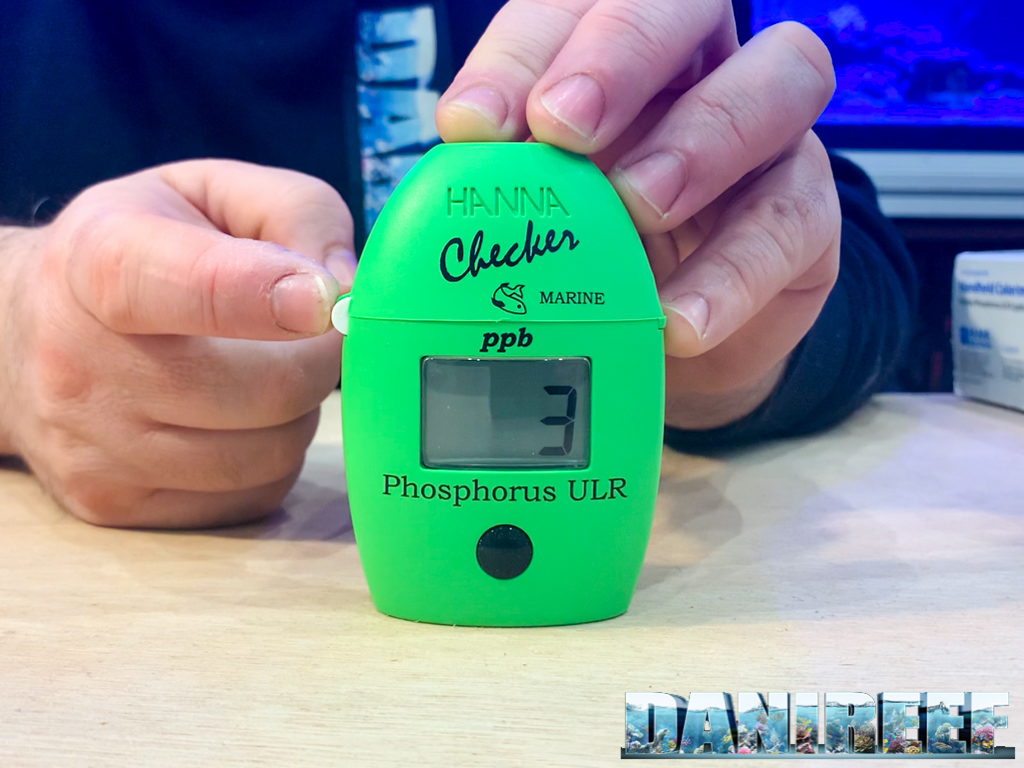
So we’d have:
3*3.066 = 9.198 ppb (parts per billion)
Usually, our tests give us results in ppm (parts per million).
Well, no problem, you only have to devide the result for 1000 and you’ll have:
9.198 ppb / 1000 = 0.009198 ppm
And you get so the value that indicates how many milligrams of phosphate are in one kg of water.
Some recommendations
[Phase 2] – When you pick up the water for the test you have to be very careful to respect the reference line. The test is very precise and even the smallest variation in the quantity of water could lead to big mistakes in the measurement.
In this phase you should keep in control the surface tension, a physical phenomenon caused by the cohesion force of the water particles, that tends to rise the level where they touch the glass.
For a correct measurement the bottom edge of the meniscus should be level with the the reference line. The picture below comes from the graphic procedure and explains clearly the correct water level.

[Phase 3], [Phase 8] – Be very careful in cleaning the external glass of the cuvette. Use a clean microfiber cloth to eliminate any residual dirt or grease.
[Phase 8] – Before you insert the cuvette for the measurement make sure you eliminate any bubbles formed during the shaking. Just flip the cuvette two or three times. This is important because the optical reader is very sensitive.
Conclusions
So, we’ve been using the Hanna HI736 Phosphorus ULR Checker for over a year, often comparing it with other tests we own to better understand its reliability. This has been a very easy comparison to make: all the other tests could only come close to the incredible precision this test reaches.
The scale of measurement is really low but this device is still able to detect even the slightest phosphorus variation in the water.
Moreover, the display gives results that can’t be misunderstood or influenced by external parameters. With other tests the result can “change” depending on the lighting conditions or the optical sensitivity of the user that’s checking the colorimetric scale.
Someone could object that such a low scale could even be excessive for this type of measurement.
Remember that in the Hanna Marine Line series, there are at least four Checkers able to gave a reliable measurement of phosphorus and phosphates.
HI713 and HI717 are respectively for Phosporus and Phosphates, both operate on a large scale.
HI736 and HI774 instead are respectively Phosphorus and Phosphates for small scale, so they can be go more in depth in the measurement.
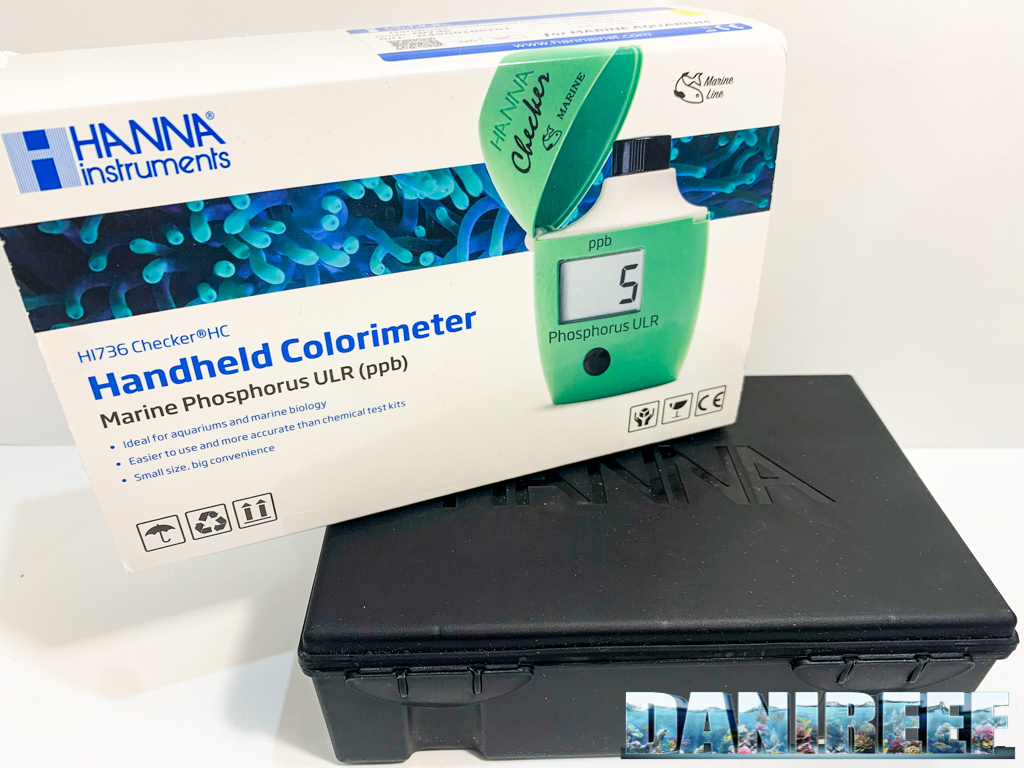
All things considered, at the same price you could choose another type. The choice is, as always, very personal, and it depends on our needs.
Having a device that checks measurements close to zero could mislead us when there are consistent quantities of phosphorus. So I feel I should recommend the Hanna HI736 Phosphorus ULR Checker to only the most expert users, who normally already have low values in their tank and want to keep them in control.
Anyway, one thing is certain: any choice you make, you can be sure that you’ll have in your hands a very valid device, precise and reliable. Simple to use, clear in the display of the result and does its job right.
PROS
 Easy and unequivocal read.
Easy and unequivocal read. Simple and fast procedure.
Simple and fast procedure. Very precise measurements, even close to zero.
Very precise measurements, even close to zero. The reagents can last longer than other tests.
The reagents can last longer than other tests.
CONS
 Only six reagents included in the original kit.
Only six reagents included in the original kit.
[Review by Simone Baglioni and translated by Agnese Poggi]









0 Comments